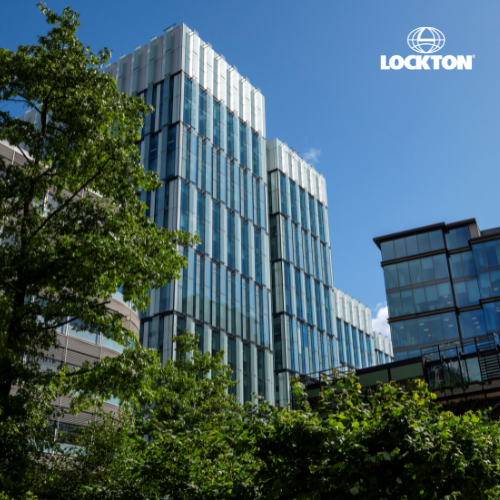Biohazards & beyond: protecting property in life sciences

In life sciences, property can range from simple office spaces to high end developments while containing laboratories, research and development (R&D), and/or biotech facilities. Naturally, such an array of property types, in-house chemicals and processes creates risks which must be mitigated.
Supply for life sciences property in the UK is struggling to meet demand. Despite a lack of supply, there are opportunities: for example, the Canary Wharf Group (CWG) and science partner Kadans have acquired planning permission for a 23-storey tower dedicated to life sciences, becoming Europe’s largest and most advanced facility of its kind, according to the CWG.
While the real estate industry attempts to match life sciences’ demand, it would be useful to assess some of the most significant risks in life science property.
1. Malicious damage
Malicious damage is the intentional destruction or defacement of commercial, private, and public property by an individual or a group. This would include acts of vandalism, arson, tampering, and destruction; intentional actions that results in damage to property.
Life sciences research often involves delicate experiments with valuable data and materials. Environmental or social activists may, for example, attempt to destroy often irreplaceable samples and compromise sensitive data. The damage can also affect the property.
Damage to equipment or property can trigger safety hazards like chemical spills, fires, or biological releases potentially leading to liability exposures.
2. Environmental liability
This exposure is slightly more complex, it is any change or damage to water, land, protected species, or natural habitats. In a life sciences facilities context, environmental damage can refer to harm inflicted on the surrounding environment by activities or incidents carried out because of the processes or activities taking place in the property.
Life sciences often handle hazardous materials, for example toxins, pathogens, and radioactive substances. Leaks, spills, and flooding can lead to the release of these materials, contaminating the environment and posing threats to the local area and public health risks. Furthermore, the risk of water contamination or extreme weather events can interrupt experiments, damage equipment, and compromise the integrity of the research conducted at the property. Any failure to meet regulatory measures could result in a violation.
The potential impact of operational disruption and clean up caused by either malicious or environmental damage can be significant and may lead to severe financial and operational consequences.
Although the initial liability is expected to fall to the occupier, it is important to understand what environmental laws are in place and if they impose strict liability on property owners for contamination on their land, regardless of whether they were directly responsible for the pollution.
In most cases, the original polluter/occupier is expected to pay, but if they are no longer around the liability for pollution may transfer to the property owner. In both scenarios, the landlord may be held responsible for cleaning up any pollution on the property, including any third-party contamination, irrespective of who caused it.
Implications to properties and risk mitigation
Malicious and environmental damage can prove detrimental to life sciences properties. Many will require specific containment measures to prevent the spread of hazardous materials. Property owners and tenants will need to engage in extensive risk management to protect the work being conducted on the site, the individuals carrying it out, the organisation running it, and the surrounding environment.
Mitigating measures to consider:
-
Specific containment resources – preventing the spread of hazardous materials.
-
Additional security measures and adequate property protection.
-
A bespoke ‘All Risks’ real estate property policy.
-
Business continuity planning – procedures in place to enable businesses to keep running during a malicious or environmental damage event.
-
Risk management processes – additional steps like risk monitoring (monitoring projects for any change in associated risk).
-
Consider an Environmental Impairment Liability insurance policy to protect the ultimate landlord.
Essentially, to align with the above and minimise the risk from malicious damage and environmental liability, a risk assessment should be carried out and plans in place before the property is constructed or converted.
For more information, please visit the Lockton Real Estate and Construction page, or contact:
Ian Lewis, Real Estate Insurance Specialist and Innovation Lead
E. ian.lewis@lockton.com





















